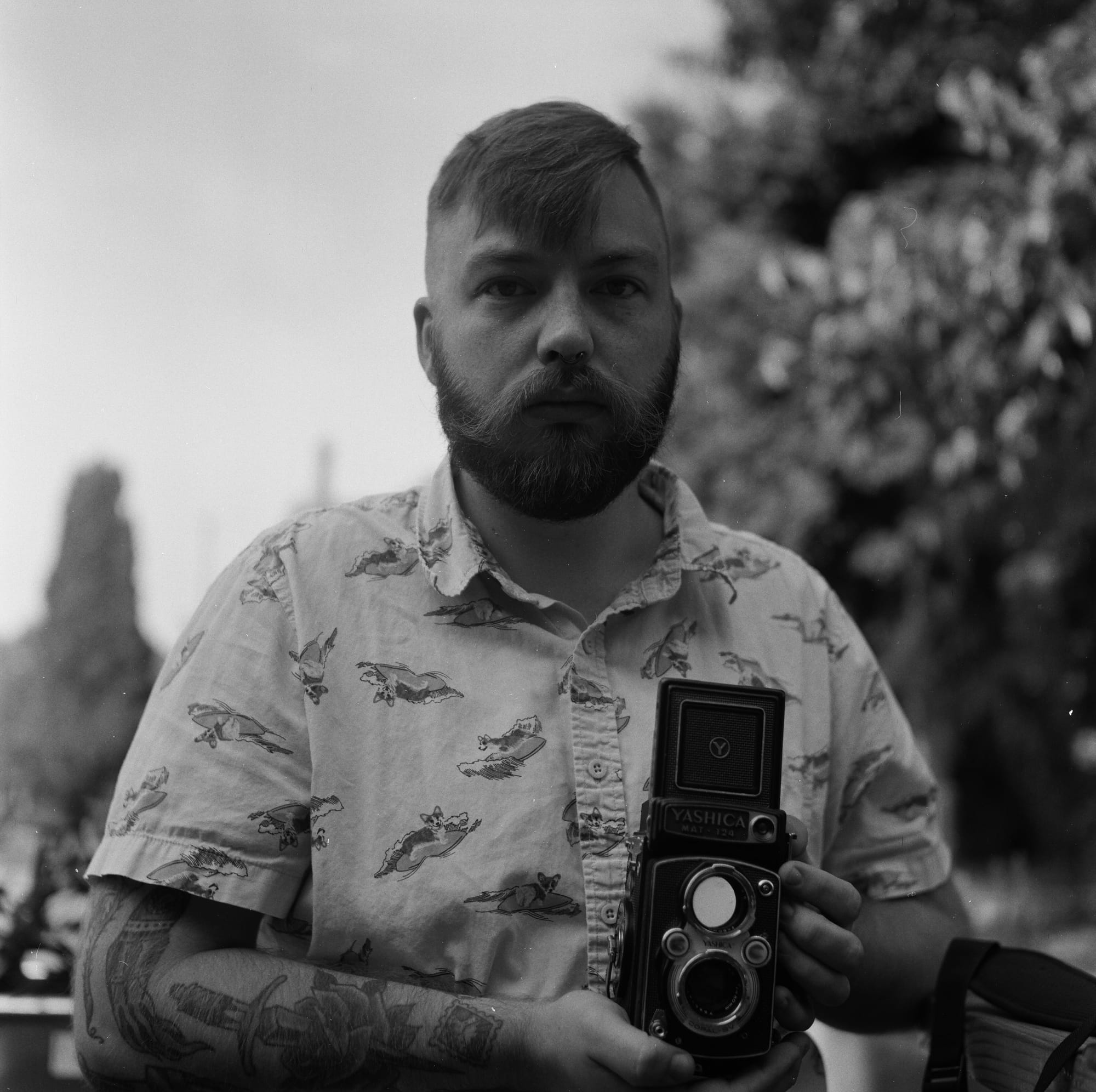The TLR and me
The history
I've always loved TLR (twin-lens reflex) cameras. I don't have a specific reason, other than liking the aesthetics of the cameras themselves. The twin lenses have a very particular look, unlike most other cameras. There's no mistaking them as anything but antiques. It uses a ground glass and mirrors but not prisms, so the image you compose with is inverted left-to-right, but right side up (unlike a view camera).
Some of my favorite photographers have used TLRs as one of or their primary camera. Irving Penn, Peter Hujar, and Walker Evans all produced incredible photos with their Rolleiflexes. Evans in particular had multiples of each camera that he used, and used both the wide-angle and normal versions.

My first TLR was a Yashica-Mat 124. It had some issues with the film advance and shutter, so I "upgraded" to the Yashica-Mat 124G not long after, but it had the same problems. I've noticed a lot of TLRs have issues where the film advance doesn't seem to correctly cock the shutter. I sent the 124G out for service (at a shop that I can't recommend, so I won't mention them) and it developed the same issue again not long after. I ended up selling the camera as part of my Leica purchase.
Eventually, a friend offered me a deal on a Rolleiflex 3.5T. The 3.5 aperture is less sought after than the 2.8 Rolleis, so it was relatively cheap. It, too, developed a problem with the advance and shutter, so when I saw a Rolleiflex 2.8E for a good price on eBay, I snapped it up. And guess what happened to that? If you guessed "a problem with the advance and shutter, you'd be right! But worse, the focus went out of whack.
After sending both Rolleis out for service, the 2.8E is working quite well. The 3.5T needs another service to fix the focus (it appears to be in focus, but isn't), but I'm going to let that go at some point.
The experience
I love the theory of using TLRs, but in practice they don't work out well for me. The Rolleiflex 2.8E is extremely hard to nail focus with, when wide open, I get too close to my subject, and the relative height of the camera (since you have to bend down to look through the chimney finder) moves me towards weaker compositions. I've tried using Rolleinar close-up adapters as well, to no good effect.
Despite the downsides, I love the experience of using one. Subjects always love to be photographed by a TLR, they're relatively compact and portable, and I love the square format. When I am out with my TLR, I feel like I'm a part of photographic history.
As much as I love using TLRs, they just aren't my ideal camera. Unfortunately, the Hasselblad seems to have similar issues since it operates very similarly. An SLR or view camera produces the best outcomes for me. Even so, I'm going to keep the Rolleiflex around, shooting at f/5.6 (equivalent to a 44mm lens at f/3 on a full-frame 35mm sensor), on Ilford Delta 3200 film. I just can't quit it.